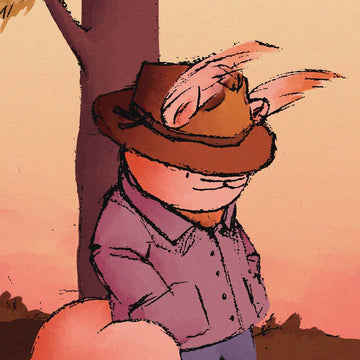
Out of all the questions there are to ask about art, "How do I find my art style?" is commonly asked and rarely answered.
I asked this question every few months when I was first starting. Most people gave me vague and unhelpful answers, though not through any fault of their own.
This question has so much to unpack before you can wrap your mind around it. The truth is that a lot of art styles just sort of happen.
Some artists don't even believe that constructed style is real. They just believe your intuitive internal voice is more evident in your creations the more experienced you become.
Over the years, I took a view somewhat in the middle: Yes, you can intentionally pursue a style, but if you squash too much of your instinct in pursuit of that style, then you are actually suppressing the style you had all along.
Here are some hints that might help you along the way to finding that balance between ideals and intuition.
1. Practice art fundamentals.
The biggest obstacle to having your own art style is a lack of understanding and experience regarding the fundamentals of art, things such as form, lighting, perspective, anatomy, and colour theory.
These things might be boring to practice, but if you give it even just a week of thoughtful daily practice, you'll be stunned by how much easier it is to make your drawing match the ideal in your head. Making time for your art can be tricky, but it is well worth it.
Sometimes the only thing standing in the way of having a distinctive style is the gap between your taste and physical skill.
Narrow the gap between what you like and what you are physically capable of creating, and you'll improve your style. Fundamentals rely on concrete principles and have a clear indication of what to do.
2. Write down your underlying inspirations.
Often, an artist's style is derived less from visual influences and more from their inner world, experiences, and concepts they think are essential.
I wrote in a past article about listing your "aesthetic values", with "aesthetic values" being the term I coined to loosely group the core things you want to include in your art.
These things can be visual, auditory, or written concepts, but you should have them physically with you in some form.
Writing or compiling stuff in an organised fashion automatically means that you'll be weighing the topics in your mind and figuring out the "why" behind each. By doing this, you'll be able to narrow down which colour or line choice communicates your themes most effectively.
Here's a personal example of how this method helps me: One concept I hold dear is the idea of "home", wherever that is, and with whomever it may be. Because I spend time thinking about home, my art has lots of soft, warm, soothing colours contrasted when necessary with desolate or cold backdrops.
Most of my paintings are pretty superficial, but having this thought of "home" in my mind produces some design choices from a unique place that is more likely to be exceptional than not.
The mood board you use to think about your "aesthetic values" can begin with the most surface-level things you find visually appealing. As you go deeper, you can start asking yourself more questions about why the imagery you like stands out to you.
You will find that there's a lot that you like for the same reasons, and by knowing that, you'll have an easier time seeking new ideas for the mood board. This method will intentionally mould your style, and the intentionality will grow it more efficiently.
3. Draw like yourself.
This is the tip that has done me the most good over the years. When I was a student in an art college, I drew "serious" things for school to try and be "real", then in my spare time, I drew silly little animals doing silly little things and going through their days believing they knew what their silly little lives were all about.
Over time, my "silly" art made its way into more and more of my school projects, first as a result of not having enough time in the day to hold myself to my standards, then as the product of genuinely embracing what came naturally to me.
As I learned to be confident in the work that I used to think was inferior, I realised that this casual genre had been my style all along.
We can consolidate these points into some advice I got from somebody a lot more experienced than me. He told me not to think about style but rather think about finding your voice.
You have one; everybody has one. It's just that maybe it needs to be trained to work well. Or perhaps it's fully equipped with knowledge, but it's lost in the fog and needs some clarity to find the way.
It's just as likely that you have silenced your voice with your embarrassment, which you gradually will outgrow. Over time, you will stop thinking about style and just think about what you're going to draw today. The rest will take care of itself.
If you want to learn more about how to develop your art style, we've got a great post that shows you how to do that in just 6 steps!
Do you have any tips for finding your art style? Let us know in the comments below! Don't forget to subscribe to our email newsletter to learn more about our art tips, products and the latest Etchr news.


